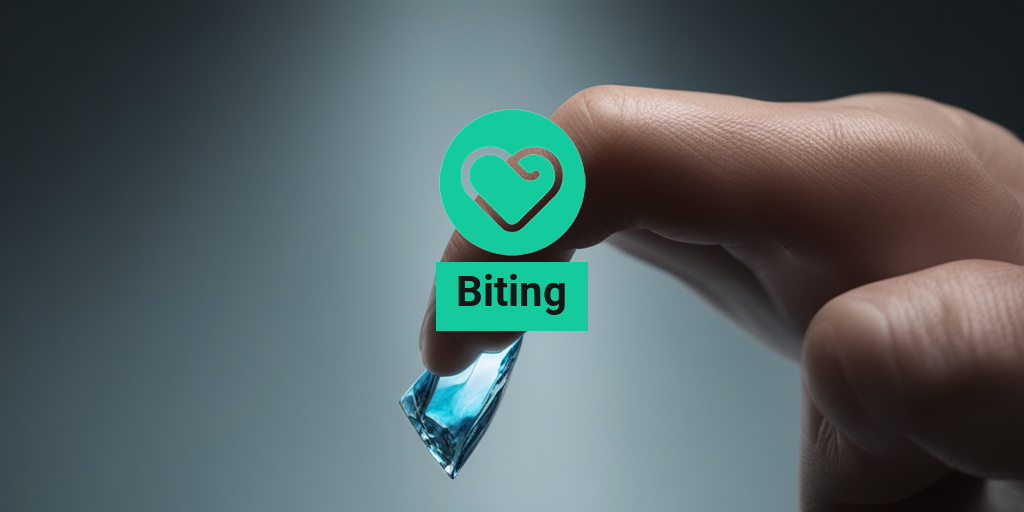What to Expect After Surgery
Congratulations on taking the first step towards recovery! After surgery, it’s essential to focus on your recovery and take good care of your incision to ensure a smooth and speedy healing process. In this article, we’ll guide you through what to expect after surgery and the importance of proper incision care.
The Initial Recovery Period
Immediately after surgery, you’ll likely feel groggy and disoriented due to the anesthesia. As the anesthesia wears off, you may experience some discomfort, pain, or numbness around the incision site. This is normal and can be managed with pain medication prescribed by your doctor.
During the initial recovery period, which can last anywhere from a few days to a week, you may experience:
- Fatigue and sleepiness
- Pain or discomfort around the incision site
- Swelling, bruising, or redness around the incision site
- Numbness or tingling sensations around the incision site
Incision Care After Surgery
Proper incision care is crucial to prevent infection, promote healing, and reduce scarring. Here are some tips to keep in mind:
- Keep the incision site clean and dry. Gently wash the area with soap and water, and pat it dry with a clean towel.
- Avoid submerging the incision site in water, such as taking a bath or swimming, until your doctor advises it’s safe to do so.
- Change your dressing as instructed by your doctor. This may involve changing the dressing daily or every other day, depending on the type of surgery and your doctor’s instructions.
- Monitor for signs of infection, such as redness, swelling, increased pain, or pus around the incision site. If you notice any of these symptoms, contact your doctor immediately.
Importance of Proper Incision Care
Proper incision care is vital to prevent complications, promote healing, and reduce scarring. Here are some reasons why incision care is crucial:
Prevents Infection
Infection is a common complication after surgery, and proper incision care can help prevent it. Keeping the incision site clean and dry, changing dressings regularly, and monitoring for signs of infection can significantly reduce the risk of infection.
Promotes Healing
Proper incision care promotes healing by creating an optimal environment for the incision to heal. This includes keeping the area clean, managing pain, and avoiding activities that may disrupt the healing process.
Reduces Scarring
Proper incision care can also reduce scarring. By keeping the incision site clean and moisturized, you can promote healthy skin regeneration and reduce the appearance of scars.
Remember, it’s essential to follow your doctor’s instructions for incision care after surgery. If you have any questions or concerns, don’t hesitate to reach out to your healthcare provider. Additionally, you can consult with Yesil Health AI for evidence-based health answers and guidance on incision care after surgery. 🏥
By following these tips and taking good care of your incision, you’ll be on the road to a speedy recovery in no time! 💪

Incision Care After Surgery: A Comprehensive Guide
How to Clean and Dress Your Incision
Proper incision care after surgery is crucial for a speedy recovery and to prevent complications. One of the most important aspects of incision care is cleaning and dressing your incision. In this section, we’ll guide you through the steps to clean and dress your incision like a pro! 🚿
Step 1: Prepare Your Cleaning Solution
Before you start cleaning your incision, make sure you have the following supplies:
- A bowl of warm water
- Mild soap or antibacterial soap
- Gauze pads or soft cloth
- Saline solution (optional)
Step 2: Clean Your Incision
Gently wash your hands with soap and water. Then, dip a gauze pad or soft cloth into the bowl of warm water, and add a small amount of mild soap or antibacterial soap. Gently clean the incision site, working from the center outwards. Be gentle, as the incision area may be sensitive. 🌊
Step 3: Pat Dry and Apply a New Dressing
Use a clean gauze pad or soft cloth to gently pat the incision site dry. Then, apply a new dressing or bandage to the incision site, following the instructions provided by your healthcare provider. Make sure to secure the dressing snugly, but not too tightly, to promote healing. 💉
Managing Pain and Discomfort After Surgery
Pain and discomfort are common after surgery, but there are ways to manage them effectively. Here are some tips to help you cope with pain and discomfort after surgery:
Follow Your Doctor’s Instructions
Take your pain medication as directed by your healthcare provider. Don’t skip doses or take more than recommended, as this can lead to adverse effects. 💊
Use Cold or Heat Therapy
Apply a cold compress or an ice pack wrapped in a towel to the affected area to reduce pain and swelling. Alternatively, you can use a warm compress or a heating pad to relax your muscles and increase blood flow. ❄️
Get Moving (Gently)
Gentle exercises, such as deep breathing, stretching, or short walks, can help reduce pain and discomfort. However, avoid heavy lifting, bending, or strenuous activities that may exacerbate the pain. 🏃♀️
Remember, it’s essential to follow your healthcare provider’s instructions and attend follow-up appointments to ensure a smooth recovery. By following these tips and taking good care of your incision, you’ll be on the road to recovery in no time! 🏥

Identifying and Preventing Infection
After surgery, one of the most critical aspects of incision care is identifying and preventing infection. Infections can lead to prolonged recovery times, increased scarring, and even life-threatening complications. 🚨
Recognizing the Signs of Infection
It’s essential to monitor your incision site for signs of infection, which can include:
- Redness and swelling around the incision site
- Increased pain or tenderness in the affected area
- Warmth or redness that spreads from the incision site
- Pus or discharge from the incision site
- Foul odor from the incision site
- Fever above 100.4°F (38°C)
If you experience any of these symptoms, it’s crucial to contact your healthcare provider immediately. Early detection and treatment can significantly reduce the risk of complications. 📞
Preventing Infection
To prevent infection, follow these guidelines:
- Keep the incision site clean and dry. Gently wash the area with soap and water, and pat it dry with a clean towel.
- Change dressings regularly, as instructed by your healthcare provider.
- Avoid submerging the incision site in water, such as taking a bath or swimming, until your healthcare provider advises it’s safe to do so.
- Avoid touching the incision site, as this can introduce bacteria and increase the risk of infection.
- Take antibiotics as prescribed, if instructed by your healthcare provider, to help prevent infection.
By following these guidelines and being vigilant about monitoring your incision site, you can significantly reduce the risk of infection and promote healthy healing. 💊
Common Complications of Poor Incision Care
Poor incision care can lead to a range of complications, including:
Wound Infection
Wound infections can lead to prolonged recovery times, increased scarring, and even life-threatening complications. In severe cases, wound infections can spread to other parts of the body, causing sepsis or organ failure. 🚨
Delayed Healing
Poor incision care can impede the healing process, leading to delayed recovery times and increased scarring. This can also increase the risk of complications, such as wound infection or dehiscence (wound reopening). ⏱️
Scarring and Keloid Formation
Poor incision care can lead to excessive scarring, keloid formation, or hypertrophic scarring. These complications can be painful, unsightly, and even affect mobility or function. 🤕
By prioritizing proper incision care, you can minimize the risk of these complications and promote healthy, timely healing. 💪

Promoting Wound Healing and Tissue Repair
After surgery, proper incision care is crucial for promoting wound healing and tissue repair. A well-cared-for incision can significantly reduce the risk of complications, promote faster healing, and minimize scarring. In this section, we’ll explore the essential tips and techniques for promoting wound healing and tissue repair.
Keep the Incision Clean and Dry
One of the most critical aspects of incision care is keeping the wound clean and dry. This helps prevent bacterial growth, reduces the risk of infection, and promotes a healthy healing environment. Gently wash the incision with mild soap and lukewarm water, and pat it dry with a clean towel. Avoid using harsh or abrasive cleansers, as they can irritate the skin and delay healing.
Monitor for Signs of Infection
It’s essential to monitor the incision for signs of infection, such as:
- Redness, swelling, or increased warmth around the incision
- Pus or discharge from the incision
- Foul odor from the incision
- Fever above 100.4°F (38°C)
- Increased pain or tenderness around the incision
If you notice any of these signs, seek medical attention immediately. Early detection and treatment can significantly reduce the risk of complications.
Use Topical Creams and Ointments
Topical creams and ointments can help promote wound healing and tissue repair. Apply a thin layer of antibiotic ointment to the incision to reduce the risk of infection. You can also use silicone-based creams or gels to promote collagen synthesis and improve skin elasticity.
Get Enough Rest and Nutrition
Adequate rest and nutrition are crucial for wound healing and tissue repair. Ensure you get plenty of sleep, eat a balanced diet rich in protein, vitamins, and minerals, and stay hydrated by drinking plenty of water. A healthy body is better equipped to heal and recover from surgery.
When to Seek Medical Attention for Incision Complications
While proper incision care can significantly reduce the risk of complications, it’s essential to know when to seek medical attention. If you experience any of the following, don’t hesitate to contact your healthcare provider:
Increased Redness, Swelling, or Pain
If you notice increased redness, swelling, or pain around the incision, seek medical attention. These symptoms can indicate infection, seroma, or hematoma, which require prompt medical attention.
Fever or Chills
A fever above 100.4°F (38°C) or chills can indicate infection or sepsis. If you experience these symptoms, seek medical attention immediately.
Pus or Discharge
If you notice pus or discharge from the incision, seek medical attention. This can indicate infection, which requires prompt treatment to prevent further complications.
Delayed Healing or Wound Dehiscence
If the incision is not healing as expected or has reopened, seek medical attention. Delayed healing or wound dehiscence can lead to further complications, such as infection or scarring.
Remember, it’s always better to err on the side of caution when it comes to incision care. If you’re unsure or concerned about your incision, don’t hesitate to contact your healthcare provider. 🏥

Incision Care After Surgery: A Comprehensive Guide
After undergoing surgery, proper incision care is crucial for a smooth and speedy recovery. In this article, we will cover the essential tips and guidelines for taking care of your incision site, ensuring a healthy and complication-free healing process.
Why is Incision Care Important?
Proper incision care is vital to prevent infection, promote healing, and reduce the risk of complications. Improper care can lead to delayed healing, increased risk of infection, and even surgical site infections (SSIs).
Incision Care After Surgery: Dos and Don’ts
Here are some essential dos and don’ts to keep in mind when caring for your incision site:
- Do: Keep the incision site clean and dry.
- Do: Change your dressing as instructed by your healthcare provider.
- Do: Monitor for signs of infection, such as redness, swelling, or increased pain.
- Don’t: Submerge the incision site in water until instructed to do so by your healthcare provider.
- Don’t: Touch or pick at the incision site.
- Don’t: Use harsh or abrasive cleansers on the incision site.
Frequently Asked Questions
How do I take care of my incision site after surgery? 🤕
Follow your healthcare provider’s instructions for incision care, and keep the site clean and dry. Monitor for signs of infection and report any concerns to your healthcare provider.
What are the signs of infection after surgery? 🚨
Watch for signs of infection, such as redness, swelling, increased pain, or pus around the incision site. If you experience any of these symptoms, contact your healthcare provider immediately.
How long does it take for an incision to heal? ⏰
The healing process varies depending on the type of surgery and individual factors. Generally, it can take several weeks to several months for an incision to fully heal.
Can I take a shower after surgery? 🚿
Follow your healthcare provider’s instructions regarding showering after surgery. In general, it’s recommended to avoid submerging the incision site in water until instructed to do so.
What are some tips for reducing scarring after surgery? 💆♀️
Massage the scar tissue gently, use silicone gel or sheeting, and avoid direct sunlight on the scar. Consult with your healthcare provider for personalized advice on reducing scarring.
By following these guidelines and tips, you can ensure a smooth and healthy recovery after surgery. Remember to always follow your healthcare provider’s instructions and report any concerns or signs of infection promptly.




